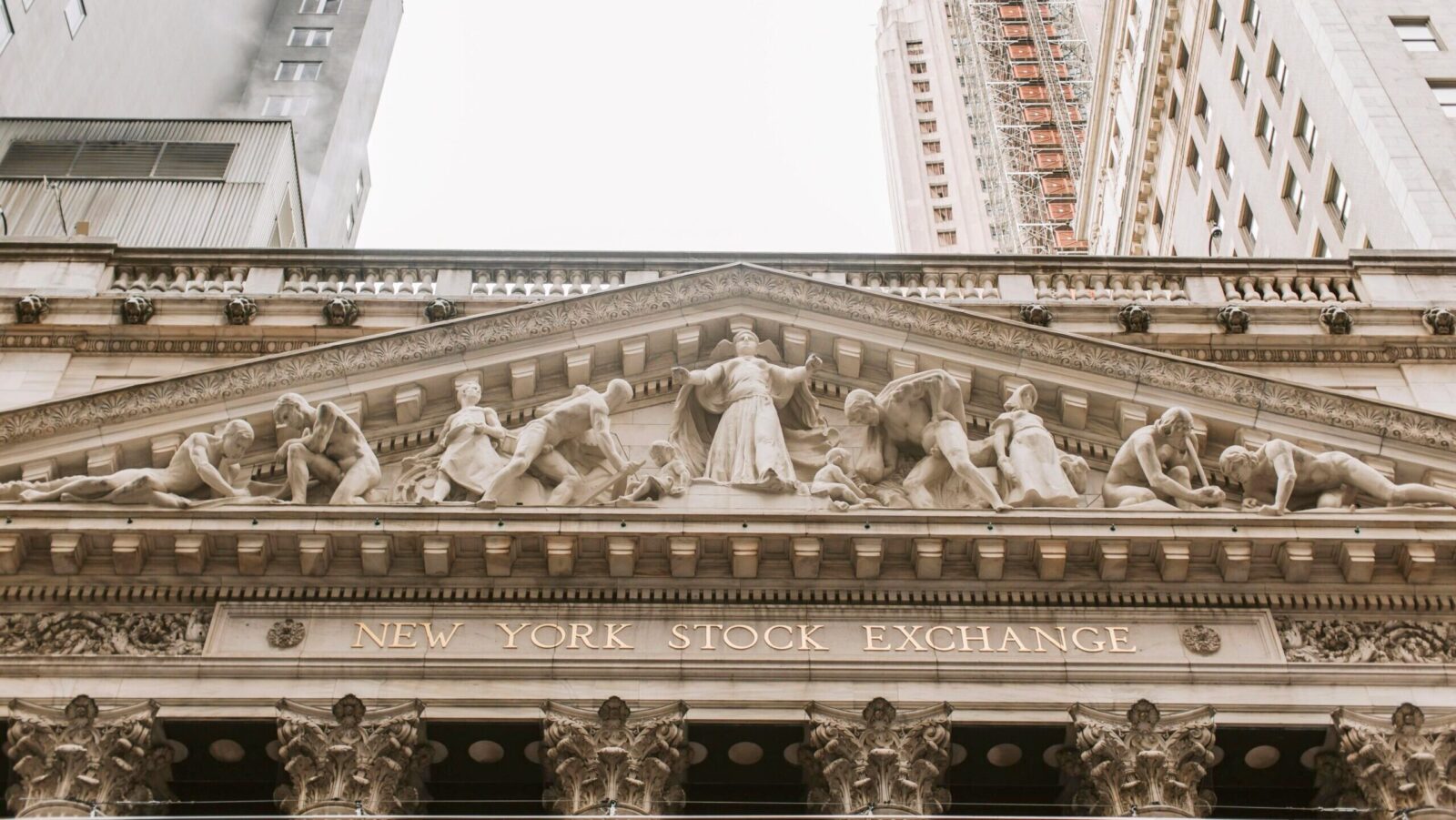Good morning.
Act your age, or lose unimpeded access to YouTube.
On Tuesday, the massive video platform announced it would soon be rolling out new AI-powered technology that will allow it to “infer a user’s age,” regardless of the birth date they claim when setting up an account, to deliver “age-appropriate product experiences and protections.” Those protections include screentime and bedtime reminders (which, hey, actually sound pretty nice), as well as restrictions to certain types of content.
In a blog post, YouTube said it will use a “variety of signals” to estimate the age of a user, including “the types of videos a user is searching for” and “the categories of videos they have watched.” If you notice your YouTube experience is suddenly feeling a little more boxed in, it may be time to dial back on the “Epic Minecraft Roller Coaster” and “Wild Fortnite Win” videos. It’s probably for the best, anyway.
Can the S&P 500 Sustain a #HotStockSummer?

The stock market is starting to look a little like a double almond milk espresso: extra strong, with just a bit of froth on top. Or maybe a lot of froth, depending on your perspective.
On Tuesday, the S&P 500 closed down 0.3%, snapping a remarkable streak of six straight closing highs through Monday — an unmatched stretch since 2021. The index is up nearly 28% since sinking to a low on April 8, as Liberation Day tariffs sparked widespread fears that a recession would soon follow. Clearly, that hasn’t happened … yet, with summer bringing not just resilience, but exuberance, to the market. Has it been too much, though?
Retail Renaissance
First: the warning signs, of which there are many. Meme stocks are back in full force, as evidenced by recent share price surges among the likes of Kohl’s, Opendoor, and Krispy Kreme. Meanwhile, the so-called “Buffett indicator” is blinking red, with the ratio of the market cap of all US publicly traded companies to the total US gross domestic product recently notching an all-time high at 212%. Also concerning: Investors are valuing stocks in the S&P 500 at more than 3.3 times their current sales, per Bloomberg data, also an all-time high. In fact, “price to sales, price to cash flow, price to book, price to dividends, they’re all near record levels,” Rob Arnott, founder of asset management group Research Affiliates, recently told the Financial Times. For more signs of market euphoria, look no further than — where else? — Barclays’ “equity euphoria” indicator, which is about double its typical levels.
“You’re beginning to see, perhaps, some very early parallels to what you saw back with the internet boom in the late 90s, early 2000s,” Pimco Chief Investment Officer Dan Ivascyn told the FT.
Optimists, on the other hand, say today’s market can’t be compared to the dot-com-era market, or any pre-pandemic market, thanks to the unstoppable rise of the retail investor, a crowd that may no longer operate like a bunch of Johnny-come-latelys:
- In fact, according to a Barclays note recently seen by Reuters, retail investors have been the “primary” driver of the current rally, investing more than $50 billion into equities in the past month. In fact, retail investors now account for about 20% of total trading volume in the US, about twice as high as pre-pandemic levels.
- Noting a possible retail-led structural change to the market, Scott Rubner, the head of equity and equity derivatives strategy at Citadel Securities, recently wrote in a note to clients seen by Bloomberg that he expects solid performance on the S&P 500 through Labor Day. A recent Goldman Sachs note, meanwhile, highlighted how spikes in speculative trading actually precede abnormally high returns on a one-year horizon.
Data Dump: Still ahead this week is an absolute flood of possibly market-moving data. Today, the Fed will announce whether it’s slashing interest rates (Investors aren’t betting on it; CME’s FedWatch tool calculates a 97% chance of rates going unchanged). Today also brings the latest earnings report from Microsoft and Meta, followed by Apple and Amazon tomorrow, providing the Magnificent 7 another chance to dictate the market’s momentum. Friday will bring another crucial jobs report. Looming over everything: a possible trade deal with China. US and Chinese officials concluded their third round of negotiations Tuesday, with no agreement yet. The current trade truce is set to expire on August 12.
Meet The Founder Making Plastic Obsolete

The world produces 450 million tons of plastic waste each year. Microplastics are seeping into our oceans and food. They even show up in our bodies. So you can imagine how revolutionary a new kind of plastic that completely dissolves in water would be.
Thatʼs what CEO Manuel Rendon created with Timeplast.
The former PepsiCo exec spent a decade perfecting a water-soluble, time-programmable plastic that vanishes without harming the environment. It can potentially disrupt the entire $1.3T plastics industry, from water bottles to packaging — and even materials beyond plastic.
They’ve already seen 1,500+ paying customers and 6,000% revenue growth in a single month.
That’s why 7,000+ investors are already here.
UnitedHealth Provides Painful 2025 Prognosis Amid Spiraling Treatment Costs
The world’s largest healthcare insurer issued a self-diagnosis Tuesday: UnitedHealth’s second-quarter results call for lots of paracetamol, as an ongoing cost crisis is set to drag on profits and make headaches for executives.
Rising costs forced the company to withdraw its guidance earlier this year, and it returned Tuesday with a disappointing downgrade for its adjusted earnings forecast: at $16 a share for 2025, well short of the $20 Wall Street was hoping for. Shareholders who didn’t join the selloff as UnitedHealth fell 7.5% Tuesday may want some Tylenol of their own, especially if they’re holding other insurers.
The Cost of Doing Healthcare Business
Overall revenue isn’t the issue at UnitedHealth, which has over 50 million health plan subscribers at its UnitedHealthcare health insurance business. In the second quarter, the company raked in $111.6 billion, $13 billion better than a year earlier and, actually, besting Wall Street’s expectations.
Like in every line of business, however, it’s the margins in healthcare that separate the unwell from the healthy, and margins at UnitedHealth shrank to 3.1% in the second quarter, down from 4.3% a year earlier. The knock-on effect was not great: Adjusted earnings in the quarter, at $4.08 a share, were down 14% year over year and substantially below analysts’ estimates of $4.45. Executives conceded their initial cost projections — medical costs are expected to be $6.5 billion more than previously expected — will continue to drag through the year. One key metric says it all:
- Investors closely watch the so-called medical care ratio of insurers, which tracks the percentage of premiums spent on patient care. UnitedHealth’s rose to 89.4% in the second quarter, an increase from 85.1% a year earlier. The company said Tuesday that it expects the ratio to hang around 89.25%, give or take 25 basis points, for the rest of 2025, which is a far cry from figures in the lower 80s that generally make executives and investors comfortable.
- Staffing shortages, rising prescription drug use, and costly new therapies have driven inflation in the medical sector higher than economy-wide inflation in recent years, putting pressure on health providers and insurers. At the same time, UnitedHealth became a poster child for mismanagement at the worst time, especially for its failure to anticipate spiraling costs in its Medicaid and Medicare Advantage plans. The result has been a nearly 48% decline in share value this year.
Pain to Go Around: UnitedHealth has been criticized for the severity of its blunders in anticipating costs, but the sector-wide problem is being felt elsewhere. Last week, insurer Centene posted a surprise quarterly loss because of cost issues, while Oscar Health said it expects operating losses of $200 million to $300 million this year, after previously expecting to make $225 million to $275 million. Molina Healthcare also trimmed its annual guidance last week, while earlier this month, Elevance Health did the same, with both citing rising costs.
Spending Decisions Just Got A Lot Harder. Join The Daily Upside’s first live webinar sponsored by Ramp, featuring additional finance leaders from ServiceNow, Guideline, and Burkland as they share how they’re balancing growth investments with cash preservation in an environment where every decision carries high stakes and every penny is under the microscope. Register today and see how top CFOs allocate cash smarter August 12th.
Boeing Touts Turnaround Year as Embattled Aerospace Giant Cuts Costs
This time last year, the state of Boeing was basically an inflamed, giant pile of cash doused in jet fuel. The company, mired in too many scandals and setbacks to print, lost nearly $12 billion when all was said and done in 2024.
On Tuesday, the makings of a turnaround came into focus. In its latest earnings report, Boeing bested Wall Street expectations, slashed losses, and left behind the astronomical cash-burning furnace that ravaged its balance sheet for a few too many quarters.
Rerouting and Regaining Altitude
A $176 million operating loss in the three months ended June 30 would not merit handing out party blowers around the boardroom table at most companies, but most companies didn’t suffer $1 billion in operating losses during the same period a year earlier. Boeing reduced that gap by taking revenue to cruising altitude at $22.75 billion, 35% better than the second quarter of last year. Both figures, as well as a $433 million loss factoring in one-time items, were better than Wall Street analysts expected.
This time last year, Boeing’s bottom line was hindered by a slowdown in production after a door plug on an Alaska Airlines 737 Max jet blew out in January 2024. In response, the Federal Aviation Administration imposed a production cap of 38 on the jetliner model while investigating Boeing’s production standards, adding to the reputational damage from years of bad headlines about crashes, layoffs, multiple CEO resignations, a worker strike and more. A turnaround effort led by new-ish CEO Kelly Ortberg, whose first anniversary on the job is next month, has made considerable progress addressing two major concerns:
- First of all, Boeing is delivering: 150 airplanes in the three months ending June 30, its best quarter since 2018 (coincidentally the last year Boeing made an annual profit). While Boeing is still subject to the production cap on 737 Max jets and has not yet sought a reprieve from the FAA, whose leader said last week the agency must look at Boeing’s entire supply chain before making any adjustments, Ortberg has said the company could produce up to 47 a month.
- Second, and perhaps most important, Boeing’s cash burn, the amount of reserves spent to fund operations, fell to $200 million in the second quarter. In the first quarter, Boeing’s cash burn was $2.3 billion, a drop in the bucket compared with the second quarter last year, when it was an eye-popping $4.3 billion.
A Timely Reminder: Boeing’s not out of the woods yet, and investors made that clear on Tuesday, sending the company’s shares down 4.4%. In a reminder of its past run of scandals, the second-quarter earnings were dragged down by a $445 million charge for a deal made with the Justice Department to avoid prosecution over two deadly 737 Max crashes. Boeing also revealed Tuesday that it doesn’t expect certification of its Boeing 737 Max 7 and the Max 10 — the smallest and largest Max planes — until 2026, later than Ortberg had previously suggested. Boeing’s defense business, which did not book any charges on its fixed-price contracts for the first half-year since 2019, is also staring down an unpleasant reminder of past troubles: A factory worker strike, similar to the one that crimped production of commercial jets last year, could hit the unit after employees voted down a new contract on Sunday.
Extra Upside
- Connecting Cars: Union Pacific and Norfolk Southern announced they’re seeking a merger to create a transcontinental railroad.
- Phoning India: India has leapfrogged China as the top smartphone exporter to the United States, following a manufacturing pivot by Apple, but President Donald Trump threatened the South Asian country with 25% tariffs on Tuesday.
- Surf, Sip & Stay In Malibu: Win a 3-night escape at The Surfrider Hotel, plus $500 for travel, surf lessons for two, and rosé by the pool. Experience California’s iconic coast — enter now.**
** Partner
Just For Fun
Disclaimer
*This is a paid advertisement for Timeplast’s Regulation CF Offering. Please read the offering circular at invest.timeplast.com.

